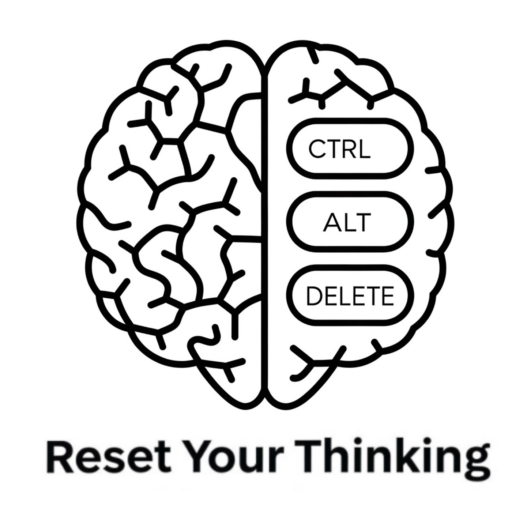This briefing document summarizes key themes and important ideas from excerpts of “OceanofPDF.com_Ogilvy_on_Advertising_in_the_Digital_Age-_Miles_Young.pdf.” The document explores the intersection of advertising principles with the evolving digital landscape, drawing upon historical context, technological advancements, and case studies. Main themes include the need for fundamental marketing questions (“but why?”), the cautious approach to digital metrics, the power of brand purpose, understanding generational nuances (particularly Millennials), the rise of “pervasive” creativity, the significance of “intent” in digital marketing, and the dynamic shift in global economic power and consumer markets. The text also features insights into influential figures in advertising and technology, illustrating different approaches to navigating the digital age.
Main Themes and Important Ideas:
1. Enduring Principles in a Digital World:
- The book opens with an anecdote emphasizing David Ogilvy’s disdain for jargon and lack of clear utility in communication, a sentiment the author suggests would extend to the complexities of the Digital Revolution. This sets a tone for grounding digital strategies in fundamental marketing principles.
- The importance of asking “Why?” repeatedly is highlighted as a crucial tool for cutting through complexity and identifying the core problem: ““Why” is the only word that cuts through the fog, gets to the real problem and helps distinguish between the means and the end. Why? Why? Why?” This underscores the need for strategic clarity before embracing digital tools.
- A strong caution against the over-reliance on and “fetishizing” of digital metrics is presented. The author advises to “Treat all KPIs (Key Performance Indicators) with caution, and the singular KPI with as much reserve as a plague spore. It could infect your whole organization with a distorted sense of priorities.” This warns against letting easily measurable data overshadow true effectiveness and strategic goals.
2. The Power of Brand Purpose (Big IdeaLs™):
- The concept of brands having “Big IdeaLs™ as well as big ideas” is introduced, emphasizing the importance of a cultural point of view that is both profitable and beneficial to society.
- Dove’s “believe the world would be a better place if women were allowed to feel good about themselves” is given as an example of a powerful organizing principle. “Brands with purpose are not just socially beneficial, but are the pathway to superior growth”, according to Steve Miles, responsible for Dove globally.
3. Understanding the Digital Consumer:
- The text critiques the simplistic categorization of generations, particularly Millennials, while acknowledging their distinct characteristics. “The thing about labels is that we use them because they are easy.” However, it notes that Millennials, and even more so Centennials, look beyond mere gratification for “authenticity, and for brands that behave well.”
- The rise of mobile connectivity (3G) and its impact on consumer engagement are mentioned, setting the stage for the mobile-first era.
4. The Evolution of Digital Technology and Marketing:
- The text provides a brief history of key figures and inventions that shaped the internet, including J.C.R. Licklider’s vision of an “electronic commons,” Donald Davies’ co-invention of packet-switching, and Tim Berners-Lee’s proposal for the World Wide Web.
- The dot-com bubble burst in 2000 is noted as a turning point, leading to a new phase focused on information sharing, user-centered design, and personalized marketing that “embraces the concept of ‘creating value for customers’.”
- The emergence of spam in 1976 is highlighted as an early challenge in digital communication.
5. The Nature of Creativity in the Digital Age:
- The concept of “pervasive” creativity is introduced, contrasting with “invasive” “packaged” creativity that interrupts passive media consumption. Pervasive creativity “spreads: it is essentially liquid.” The distinction lies in seamless integration versus forceful intrusion.
- The difficulty of defining an “idea” is explored, emphasizing that great advertising often arises from collaboration and evolves over time, referencing Beowulf as an analogy.
- Case studies like IBM’s “A Boy and his Atom” demonstrate innovative uses of technology for brand storytelling, highlighting that “Sometimes the biggest ideas are found in the smallest of places.”
6. The Significance of Intent and Data:
- The increasing importance of understanding consumers’ “intent” through search engine marketing (SEM) is emphasized. John Battelle’s characterization of Google as the “database of intent” is quoted.
- Keywords are identified as “the common denominators of the digital age,” providing insights into consumer desires and needs.
- While acknowledging the power of big data, the text advocates for a “Really Useful Data Resolution” that starts with a problem, not the data itself, requiring a combination of a wide-angle lens and a narrow depth of field.
7. Navigating the Digital Ecosystem:
- The importance of a brand’s own website (“the medium you own”) is discussed, with the fundamental question being “Well what do you want one for?” The answer informs the website’s purpose and strategy.
- The development of DAVE (a proprietary customer engagement approach) is mentioned as a way to define customer ambition and unlock value through data-driven creativity.
- The foundational role of “code” in powering the digital world and various aspects of our lives is highlighted.
8. Profiles in Digital Leadership:
- Brief insights are provided into the philosophies and approaches of influential figures in the digital advertising space:
- Bob Greenberg (R/GA): Embraces innovation and “Just Do It” attitude.
- Akira Kagami (Dentsu): Represents a unique Japanese perspective on digital, emphasizing integration and implicit understanding (“ichi o kiite juu o shiru”). He observes the rapid digital adoption in Asia with both “Kyoi (wonder) and Kyõi (threat).”
- Matias Palm-Jensen: A key figure in Sweden’s digital innovation, known for fostering big ideas and talent.
- Chuck Porter: Emphasizes a straightforward and “nice” approach to advertising, focusing on creating buzz for brands like MINI.
9. Understanding Behavioral Science and Nudging:
- The principles of behavioral science and the concept of “nudging” are introduced as tools for influencing behavior in marketing. The MINDSPACE framework is mentioned as a practical application.
10. The Shifting Global Landscape:
- The notion of “America still top nation?” is questioned, reflecting a changing global economic and consumer power dynamic.
- The rise of Asia, particularly China and India, as significant consumer markets is highlighted with statistical data on middle-class growth. The BRIC concept is deemed somewhat outdated for marketing purposes.
- Case studies like Jollibee in the Philippines and Wardah in Indonesia illustrate the power of localism and cultural relevance in brand building.
- The phenomenon of “market drop off” in certain regions for multinational corporations, creating opportunities for new Asian brands, is discussed.
- Huawei is presented as a defining multinational of the future, driven by a unique Eastern-Western perspective and a culture that values “greyness” (flexibility and compromise) alongside self-criticism.
11. The Battlegrounds of the Digital Age:
- Social media, mobile phones, and “continuous commerce” are identified as key battlegrounds for brands.
12. The Importance of Content:
- The rise of branded content and Red Bull’s strategy of becoming a publisher are mentioned, shifting beyond traditional “content marketing.”
13. The Role of Emotion in Advertising:
- The Cadbury “Gorilla” ad campaign is presented as an example of advertising that resonated emotionally despite not adhering to traditional pre-testing metrics.
Conclusion:
The excerpts from “Ogilvy on Advertising in the Digital Age” underscore the need to blend enduring advertising principles with a nuanced understanding of the digital landscape. It emphasizes the importance of strategic thinking (“but why?”), a cautious approach to metrics, the power of brand purpose, a deep understanding of consumer behavior (including generational differences and intent), and the embracing of “pervasive” creativity. The text also highlights the significant shifts in global markets and the emergence of new digital powerhouses, urging a dynamic and adaptable approach to advertising in this ever-evolving era.
RYT Podcast is a passion product of Tyler Smith, an EOS® Implementer (more at IssueSolving.com). All Podcasts are derivative works created by AI from publicly available sources. Copyright 2025 All Rights Reserved.

